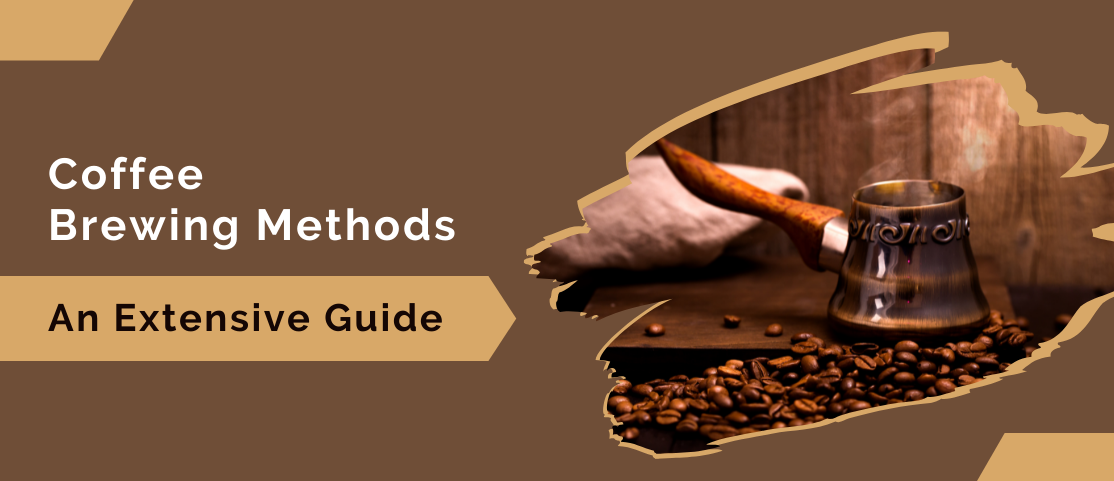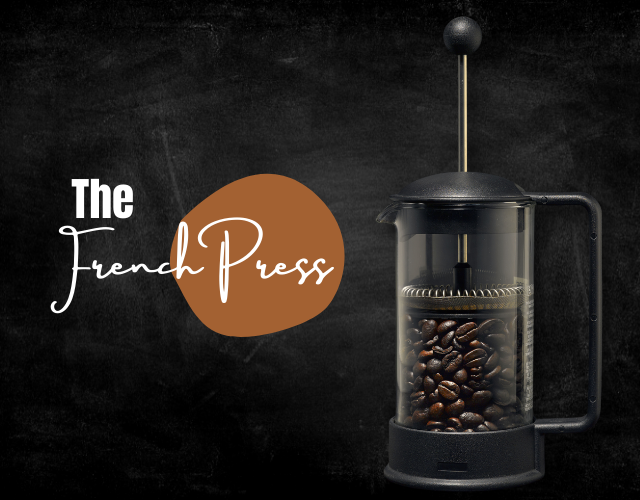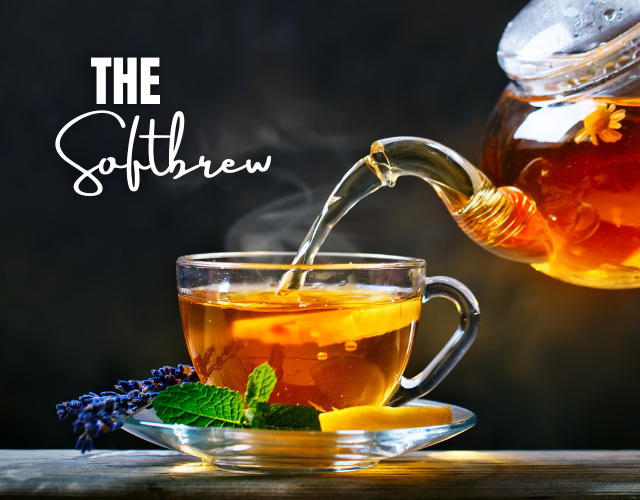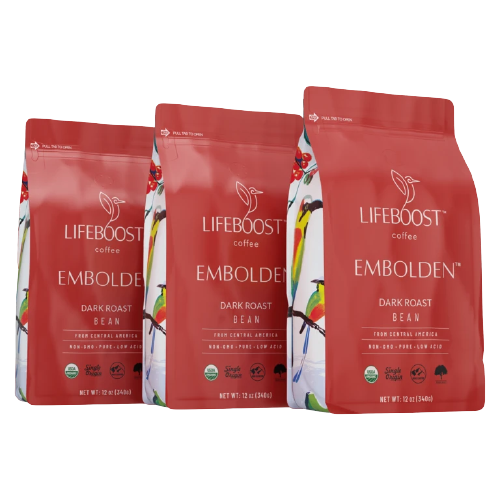Coffee Brewing Methods – an Extensive Guide
A decade ago, had someone asked you about how to make coffee, you would have almost certainly told them about the process required for preparing an Espresso.
This is because, until very recently, Espresso, or perhaps even Americano, were the only two names synonymous with coffee. However, over the last few years, we have been able to discover numerous other progressive coffee-making methods. While this obviously is good news for coffee lovers, it also makes it tough for them to decide the brewing method that they should treat as their go-to. Obviously, until you have given each method a shot, you cannot actually determine which one works best for you.
For coffee enthusiasts who find themselves in this conundrum, we have prepared a guide that will walk you through several coffee-making methods that will answer your question, ‘how to make good coffee', and ultimately, assist you in your chase for the ideal cup of coffee.
Using Pressure to Brew:
Once again, espresso is often the first word that comes to mind when we think about coffees that are brewed using pressure. However, there are several other types of coffees that can be brewed with pressure, then your standard espresso.
In simple words, pressure-brewed types of coffees are those that have been extracted with the help of pressure. Let us cast a deeper eye at the various pressure-brewing methods:
The Espresso Machine:
We are fairly certain that anyone who knows anything about coffee would also know something about an espresso machine – after all, these machines have been fulfilling our caffeine requirements for more than a century. The modern-day espresso machine comes in a variety of sizes, shapes, and with plenty of gimmicks and features. However, this does not mean that you should let yourself be confused by these flashy machines since the basics are still very much identical: you push pressurized water through a puck/chamber containing coffee beans that have been finely grounded, using a filter. The result is what is called an espresso shot.

So, what about the price? As we said, espresso machines are available in many different types, so you will likely be able to find one within your budget. Some of the most common espresso machine types include:
- Semi-automatic
- Fully-automatic
- Manual lever
- Portable
- Commercial (generally used by cafes)
Things to Expect
Time: The amount of time from bean to brew will depend largely upon your machine type. For instance, commercial machines take approximately 40 minutes to warm the coffee up, while a home machine might not need more than three minutes. Either way, once the coffee is warm, you will just need another 25-30 seconds for the fix.
Grind: You will require a consistent, fine grind, and here are a few steps that you can follow to achieve that: Pinch the grind and see the result – ideally, the grind should be clumping in the fingertips. If it does not clump, it means that the grind is too coarse; if it clumps way too much, it means that the grind is excessively fine.
Resulting brew: An espresso shot that has been prepared the right way will be sharp, strong, and rich with flavor. If you want to convert the espresso shot into an Americano one, all you need to do is add a bit of hot water. You can also throw in a bit of steam milk if you prefer milk-based coffees.
Required skill level: Once again, this is something that will largely be determined by your espresso machine type. There are certain machines that almost automatically deliver a great shot, while others (normally the more manual types) need higher skill levels – which is where barista schools come into play. For premium results, make sure that you are using espresso beans and a decent tamper.
Best-suited for: People who prefer sharp and quick caffeine hits, and for those who like milkier brews (such as latte). An espresso machine is unique, which is why you cannot expect any other kind of machine to deliver the perfect espresso shot.
Not suited for: Those who enjoy subtler coffee flavors; for those who are on a tight budget and cannot spend big on a coffee machine; and for those who do not have sufficient space for a large coffee machine (people who are frequently traveling, for instance).
The Moka Pot
Like we said, if you do not have big money to spend on a coffee machine, perhaps the espresso machine is not the best choice for you. However, that does not mean that you cannot still enjoy a pressurized coffee brew and the espresso-like kick that comes with it. The Moka pot, also known as the stovetop espresso brewer, is certainly not a bad second choice.
The magic of a Moka pot lies in its triple-chambered brewing process. The lowest chamber allows the water to boil, and the resulting steam creates pressure that allows water to go upwards and in the topmost chamber.
Let us mention that the resulting brew is not quite the same as a shot of espresso. However, if you get the process right (the process does require a bit of skill), you will be able to enjoy a super-intense and bittersweet concoction sufficient to carry you through your day. A major benefit of Moka pots is that they allow you to brew multiple coffee cups at the same time (you can brew anywhere from four cups to 16). So, if you have a crowd that is searching for a caffeine hit, the Moka is your best friend.
Things to Expect
Time: The bean to brew time is amazingly short – once the water is heated, it should not take longer than five minutes in most cases (induction stoves might require slightly more time). This super-quick process is the reason that Moka pots are loved by people who are in a rush and want a quick morning hit of caffeine.
Grind: The grinding type is the trickier bit. Normally, you would want a grind that is coarser compared to the kind of fine grind suitable for espresso. At the same time, the grind should be finer compared to the kind of grind used for drip coffee. If this rule does not help you out, we recommend going for trial-and-error to end up with the perfect grind type – this means starting off with coarser grinds, and then moving towards finer grinds until you come up with a grind that delivers the perfect end result.
As a rule of thumb regarding how to grind coffee beans for a Moka pot, remember that if the resulting brew is excessively watery or weak, you need to go finer with the grind. Similarly, if the resulting brew is excessively bitter, you need to reduce the fineness a bit.
Resulting brew: As we mentioned, the resulting brew will not exactly be the kind you get with espresso machines, but it will be pretty close (provided that you have gotten the technique and grind right). You can expect coffee that tastes strong and sharp.
Required skill level: Although there is a bit of skill needed, you do not need to worry about getting a barista certification. The toughest bit is getting the grind right; once you master that, the rest of the process is relatively simple – requiring you to fill chambers, get the heat going, and just remain on the alert.
Best-suited for: People who can spend a limited amount on a coffee machine; people requiring a super-portable machine but do not really prefer the thin brew that comes out of drip coffee.
Not suited for: People unwilling to compromise on the texture and taste of an espresso shot. Also, remember that the brew is quite strong (perhaps even slightly harsh). Hence, if this does not feel right, we recommend you to keep looking.
Aeropress
The Aeropress has become something of a cult hero within coffee-loving travelers. Moreover, a lot of people claim that they have never tasted better coffee than the kind that is prepared using an Aeropress.
One of the greatest things about the Aeropress is that it keeps things simple – the right air pressure, water temperature, and grind size means that all it takes is a few minutes to end up with some supremely tasting brew. Aeropress is certainly right up there with the swiftest coffee makers around, and, as we said, many people who have used this coffee maker swear by the taste – so the speed does not mean that the quality is compromised in any way.

Buying an Aeropress means buying a three-pieced simple tool designed to deliver maximum taste with no real effort whatsoever. Another factor that makes the Aeropress maker so great is the fact that, alongside regular coffee, it can also prepare cold brews and even nearly espresso coffee.
Things to Expect
-
Time: While there are multiple coffee types that you can prepare using an Aeropress, the quickest one will only require about a minute once the water heats up.
-
Grind: Okay, this is the fun bit – the type of grind is irrelevant! Every grind will deliver a different result, so all you need to do is determine the grind size depending on how you feel.
-
Resulting brew: Beautiful taste; beautiful color. The coffee is a lot more ‘cleaner’ in taste, making it quite different from the Moka pots or French presses.
-
Required skill level: Okay, this is the (second) fun bit – if you have a dog or a cat, even they could use the Aeropress maker with ease. However, having said that, there is no need to get lazy – once you get used to the regular brew, you can use the maker to experiment with other brewing techniques and methods.
-
Best-suited for: Travelers; or people who love a quick shot of great and clean-tasting coffee. Honestly, the Aeropress maker ticks almost every box.
- Not suited for: Honestly, it is a bit hard to answer this. However, maybe the Aeropress is not a good fit for you if you are not a fan of paper filters or do not like wastage. Also, it is only possible to brew a maximum of two cups in every rotation, so making coffee for a considerable number of people might feel a bit tedious.
Using Steeping to Brew
Steeping is simply a synonym for immersion, and this coffee-brewing method is the oldest and most basic of them all. Basically, you are mixing hot water with coffee grinds, and letting this combination work its magic. Once this happens, you separate the two – you keep the coffee while you dump the damp coffee grinds.
While the method is as simple as it sounds, you need to be careful about under or over-steeping the brew. With the former, you will have a thin and weak resulting brew; while the latter will make the brew excessively bitter.

While the method is as simple as it sounds, you need to be careful about under or over-steeping the brew. With the former, you will have a thin and weak resulting brew; while the latter will make the brew excessively bitter.
The French Press
While home-brewed coffees do not have a mascot, but if they did, it would probably be the French press. It has been steeping household coffees for the last hundred-odd years, and unsurprisingly, brags an extremely loyal following within the home barista universe. So, why this massive fan-following? While there are multiple reasons for that, the main ones are its ease of use, extreme cost-effectiveness, and the resulting unique brew.
Let us talk a bit about how you can use French presses:
Things to Expect
-
Time: While the time from bean to brew may not be the shortest, it is also not the longest. From water boiling to plunging and steeping, you should be needing approximately 10 minutes. However, it is important to ensure that you are completely focused on the French press during the steeping process.
-
Grind: You will need coarse grind – no two ways about that. Fine grinds will mean that the particles get stuck inside the filter, which means that they will also make their way inside the final brew. This will lead to excessive steeping, and what you will end up with is an extremely bitter mess.
-
Resulting brew: A non-harsh, unique coffee that is rich with flavor and aroma. However, the coffee is likely to contain a bit of sediment, so you might want to avoid consuming the final few sips.
-
Required skill level: French presses are fairly easy to make. Perfect French presses are slightly harder. In general, however, if you operate according to a clear instruction set, you will be good to go.
-
Best-suited for: People who prefer the unique brews that only a French press can offer them; people who live in a household filled with caffeine fiends.
- Not suited for: Frequent travelers – French presses are usually prepared from glass (however, you might be able to find one made using stainless steel).
The SoftBrew
This invention has only been around since 2010, and you can think of it as similar to a French press, only easier. In fact, the word ‘simple’ is synonymous with the SoftBrew – all you need to do is fill the filter using ground coffee, put in hot water, and allow it to steep for around 5 to 8 minutes.
That is it – your coffee is ready to be served. The unique filter is what makes SoftBrew so special. This filter contains numerous tiny holes, allowing you to use grinds of virtually any size (including super-fine ones).
Things to Expect
-
Time: The bean to brew duration will take approximately 5 to 8 minutes (excluding the time taken to get the water heated).
-
Grind: Well, go with what you feel like – everything will work; it is time to experiment.
-
Resulting brew: As we mentioned, it is very much like a brew coming out of a French press. Thanks to the unique filter, you can even use grounds that are less than 150 microns in size (in other words, ‘hugely’ tiny). This means that the final brew contains body, flavor, and depth. So, you can think of a SoftBrew brew as a French press one, but considerably cleaner.
-
Required skill level: Nil. Zero. Zilch. You could have one hand tied behind your back and your eyes blindfolded, and you will still be able to prepare amazing coffee using SoftBrews.
-
Best-suited for: If you prefer coffee that is easily brewed and has a rich taste to it, the SoftBrew is the pick for you.
- Not suited for: If you prefer creativity with your brewing methods and to play around a bit, you might find the SoftBrew a tad bit boring.
Maximizing your Coffee Experience with Lifeboost Coffee
So, speaking of premium coffee types, flavors, depth, and aromas, Lifeboost offers you coffee that is rich in both taste and quality. Every coffee is prepared using non-GMO, chemical-free, single-origin, fairly-traded, and shade-grown beans – in other words, you will be hard-pressed to find a healthier coffee across the entire planet.
So, speaking of premium coffee types, flavors, depth, and aromas, Lifeboost offers you coffee that is rich in both taste and quality. Every coffee is prepared using non-GMO, chemical-free, single-origin, fairly-traded, and shade-grown beans – in other words, you will be hard-pressed to find a healthier coffee across the entire planet.
Since Lifeboost’s coffees are roasted after an order is placed, its customers enjoy the freshest-possible coffee and not the kinds that have been roasted months ago. Furthermore, all of Lifeboost’s beans are independently tested to make sure that they do not contain Mycotoxins or any other kinds of toxins.
As we know, water has a pH level of 7. Unfortunately, a lot of popular coffee stores and shops have coffee with pH levels that are lower than 5. What this means is that these coffees are highly acidic, and often lead to stomach problems, decaying teeth, and other problems associated with high levels of acid.
Lifeboost’s coffee, on the other hand, has a pH level of at least 6, meaning that it has created coffee-lovers out of customers who once thought that they will never be able to handle a cup of coffee ever again. The coffee is grown and produced in Nicaragua – a region that is known for the supreme quality and pleasant taste of its coffee beans. Also, since all the coffee is cultivated in the same region, as well as roasted and processed using identical methods, you can be assured of consistency in terms of quality.
Final Words
So, there you have it – everything that you needed to know about the two major methods of coffee brewing. If you are looking for supreme, fresh, and healthy coffee – you will likely not be able to do better than Lifeboost, so please feel free to reach out to us.
MEDICAL DISCLAIMER
This content is for informational and educational purposes only. It is not intended to provide medical advice or to take the place of such advice or treatment from a personal physician. All readers/viewers of this content are advised to consult their doctors or qualified health professionals regarding specific health questions. Neither Dr. Charles Livingston nor the publisher of this content takes responsibility for possible health consequences of any person or persons reading or following the information in this educational content.
All viewers of this content, especially those taking prescription or over-the-counter medications, should consult their physicians before beginning any nutrition, supplement or lifestyle program.







